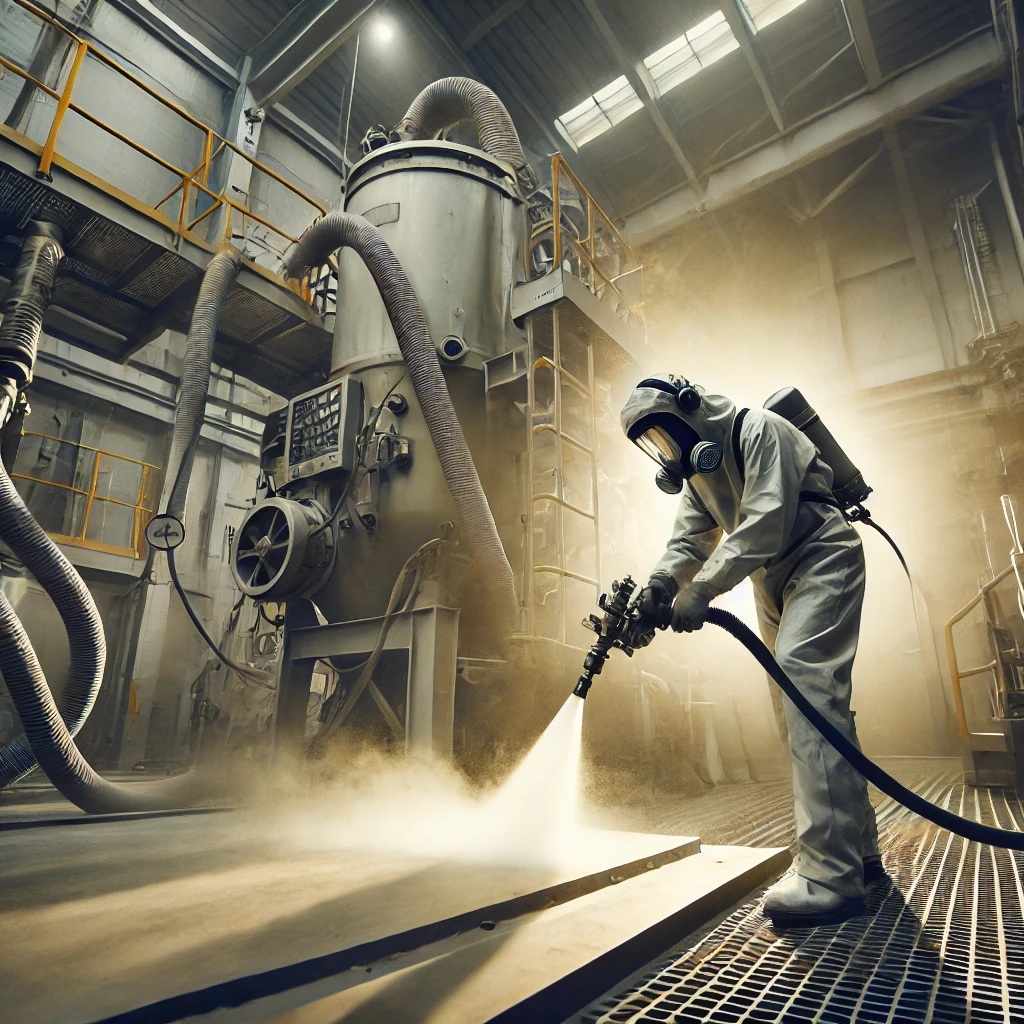
In high-stakes industries like aerospace, automotive, EV manufacturing, and defense, every micron of precision matters. A misstep in surface finishing doesn’t just impact aesthetics—it can compromise performance, safety, and compliance. That’s why abrasive blasting remains the backbone of industrial surface preparation, ensuring components are free from corrosion, scale, and contaminants before coatings, bonding, or assembly.
But here’s the catch: abrasive blasting is also one of the most cost-sensitive processes in manufacturing. Misjudging blasting costs can lead to overruns, wasted resources, and even missed deadlines on critical projects. On the flip side, calculating costs accurately helps companies control budgets, optimize resources, and stay competitive in industries where margins are razor-thin.
So how do you calculate abrasive blasting costs accurately—and why does it matter so much for advanced manufacturing sectors? Let’s break it down.
Why Does Cost Accuracy in Abrasive Blasting Matter?
Compliance & Safety
In aerospace and defense, surface integrity is non-negotiable. Undercutting costs can lead to inadequate preparation, potentially failing rigorous industry standards (e.g., AMS 2431 for aerospace shot peening).Production Efficiency
In automotive and EV manufacturing, high-volume blasting means even small inefficiencies compound. Saving 10% on abrasive media usage could equal millions annually in large-scale plants.Customer Confidence
OEM clients demand transparency. Accurate blasting cost breakdowns demonstrate control and reliability—key trust factors in supplier relationships.
The Core Components of Abrasive Blasting Costs
Accurate cost estimation requires considering both direct and indirect expenses. Here are the major drivers:
1. Media Selection & Consumption
Different abrasives (steel grit, aluminum oxide, glass beads) vary in price and longevity.
For aerospace titanium finishing, higher-cost but cleaner abrasives may be justified to avoid surface contamination.
Key Metric: Cost per usable cycle of abrasive media.
2. Labor & Operator Efficiency
Operator skill directly impacts blasting speed and material waste.
In automotive assembly lines, faster cycle times mean higher throughput—making labor efficiency a cost lever.
3. Equipment Wear & Maintenance
Blast nozzles, hoses, and dust collectors degrade faster under aggressive media.
Overlooking maintenance in EV battery casing preparation can result in downtime, delaying production schedules.
4. Energy & Air Compression Costs
Compressed air is often the hidden cost. A slightly undersized compressor can force longer blast times, increasing overall costs.
5. Containment & Disposal
Environmental regulations in defense manufacturing require specialized handling of spent abrasives.
Disposal costs can sometimes rival abrasive media costs themselves.
Practical Framework: How to Calculate Abrasive Blasting Costs
Here’s a step-by-step framework your team can adapt:
Define the Project Scope
Surface area to be blasted (m² or ft²).
Desired surface profile (e.g., 2–3 mils for aerospace bonding).
Estimate Media Consumption
Media cost ÷ Average number of recycling cycles = True cost per square foot.
Add Labor Costs
Operator hourly rate × Expected blasting hours.
Factor in Equipment & Energy
Depreciation, wear parts, and compressor usage.
Account for Environmental & Compliance Costs
Waste collection, disposal, and air quality compliance.
👉 Formula Example:
Total Blasting Cost = (Media Cost ÷ Media Life) + (Labor Rate × Time) + Equipment Wear + Energy Use + Disposal Fees
Real-World Example
Automotive EV Manufacturing:
An EV plant needed to prepare battery tray assemblies for coating. By analyzing blasting cycles, they discovered they were underestimating compressor energy use by 18%. Once corrected, they reduced blasting costs by $0.40 per part, saving nearly $1.2M annually on high-volume production.Aerospace Component Finishing:
A supplier underestimated abrasive recycling cycles. Switching from disposable glass beads to recyclable steel grit reduced costs by 35%, while still meeting strict adhesion requirements for composite bonding.
How Accurate Costing Drives Competitive Advantage
When manufacturers calculate abrasive blasting costs precisely, they:
Win more contracts by offering competitive, transparent quotes.
Optimize production scheduling with fewer unplanned delays.
Improve sustainability by reducing media waste and energy use.
Strengthen compliance with AS, ISO, and defense industry standards.
Final Thoughts
In industries where every part is mission-critical, abrasive blasting cost accuracy is not just an accounting exercise—it’s a strategic advantage. Whether you’re building aerospace turbine blades, automotive EV platforms, or defense-grade components, precise cost calculations help you stay lean, reliable, and competitive.
The companies that thrive in advanced manufacturing are not necessarily the ones with the biggest budgets—they’re the ones who know their numbers best.
FAQ: Abrasive Blasting Cost Accuracy
Q1: What’s the most overlooked factor in blasting cost calculations?
A1: Compressed air energy consumption. Many plants underestimate how much power blasting operations require.
Q2: How often should abrasive blasting costs be recalculated?
A2: Ideally quarterly, or whenever you change media, equipment, or process parameters.
Q3: Which abrasive is most cost-effective for aerospace applications?
A3: It depends on the part. Steel grit is economical for general cleaning, but non-contaminating abrasives like aluminum oxide may be required for titanium or composite bonding surfaces.
Q4: Can automation reduce blasting costs?
A4: Yes. Automated blasting systems reduce labor variance, improve cycle time predictability, and minimize media waste.
Q5: How do environmental regulations affect blasting costs?
A5: Disposal of spent abrasives—especially if hazardous—can double your operational costs if not accounted for early.
Write a comment ...